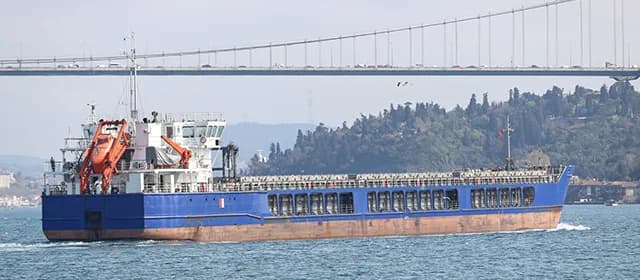For transportation planners and engineers, understanding and forecasting traffic patterns in different scenarios is essential. Traditional traffic analysis models can provide some insights, but they struggle with complex situations and can be inefficient and costly to implement at a microscopic level.
Traffic simulation systems address these challenges effectively. These advanced software tools create mathematical models of transportation networks, allowing planners to virtually simulate and evaluate traffic dynamics, leading to more informed decision-making. This blog post sheds light on the top 10 traffic simulation systems companies, classified based on global presence.
What Is Traffic Simulation Systems?
Traffic simulation systems are computer software applications designed to mathematically model transportation infrastructures, including freeway junctions, arterial routes, roundabouts, and downtown grid systems. These tools aid in the planning, design, and operation of transportation networks. They are utilized by national and local transportation agencies, academic institutions, and consulting firms to manage transportation networks more effectively.
According to Kings Research, the global traffic simulation systems market is forecasted to hit a valuation of $7.83 billion by 2030. This is up from $4.10 billion in 2022.
What Are the Applications of Traffic Simulation Systems?
- Transportation Network Planning: Simulation models assist transportation planners in evaluating the performance of existing transportation networks and in planning future expansions or reconstructions. By simulating and analyzing different scenarios, planners can optimize the use of available budgets and resources.
- Traffic Signal Optimization: These systems help optimize traffic signal timing at intersections. By simulating various signal phasing and timing plans, planners can determine the most efficient strategies to enhance traffic flow and reduce congestion.
- Evaluation of Intelligent Transportation Systems: Traffic simulation models are used to assess the effectiveness of intelligent transportation systems (ITS) such as adaptive traffic signal control, dynamic message signs, and variable speed limits. These evaluations help optimize traffic flow, improve safety, and reduce travel times.
- Traffic Safety Analysis: Simulation systems play a crucial role in assessing the safety implications of proposed changes in transportation systems. By simulating different scenarios, planners can identify potential safety hazards and implement measures to minimize risks and enhance overall safety.
Top 10 Traffic Simulation Systems Companies Leading the Way in 2024
1. PTV Group
PTV Group’s Vissim Kernel provides detailed and realistic simulations of traffic environments, capturing the interactions and movements of various road users and transport modes. This software enables the evaluation and validation of innovative concepts like mobility-as-a-service, shared mobility, and autonomous driving in a virtual setting.
The automotive sector leverages these simulations for advanced driver assistance systems, connected and autonomous vehicle development, and emissions testing. This subscription-based solution supports high-performance computing and integrates with other systems for parallel simulation runs.
2. Micro Nav Limited
Based in Bournemouth, Micro Nav Limited specializes in air traffic control and airport simulation systems and has received the Queen's Award for Enterprise for International Trade, recognizing its excellence in exporting high-tech training and control systems. The company's software portfolio includes the Fast Airport Builder and Airside Driver Trainer tools.
Micro Nav's BEST simulation software is used for airport traffic control training, airport design, evaluation, and research. It is scalable and accessible via the cloud with BEST Remote, and BEST Insights offers metrics for training, operations, safety, and environmental purposes. The high-fidelity simulation solutions are robust and continuously evolving to maintain competitiveness.
3. AnyLogic
AnyLogic provides simulation software with a Road Traffic Library designed for detailed modeling and simulation of traffic flows. This library is suited for highways, parking lots, streets, manufacturing sites, etc.
AnyLogic Road Traffic Library allows for detailed simulation of traffic flows, driver behavior, and transportation dynamics. It includes predefined driving regulation algorithms and supports 2D and 3D models of vehicles and environments. The software supports mixed-simulation methods and offers tools for optimizing traffic light management.
4. INRO (Now a part of Bentley)
INRO offers software solutions for transportation planning and traffic simulation and is recognized globally for its travel forecasting, planning, simulation, and mobility analytics tools.
INRO’s Dynameq software combines mesoscopic and microscopic properties to create comprehensive traffic simulations. Dynameq scales from single, congested corridors to entire cities, maintaining detailed vehicle trajectories and ensuring transparency across the network, regardless of location and time.
5. Fujitsu
In the fields of logistics and transportation, including traffic simulation, Fujitsu has been a pioneer in innovation. Their technological and software solutions are meant to enhance transportation networks and reduce traffic jams. Fujitsu and Hexagon collaborated to create a Traffic Simulation and Analysis Map, which simulates traffic and visualizes transportation data to help with smart city planning.
Fujitsu has also looked into using quantum computing to improve traffic flow. To enhance traffic management, their approach combines quantum-inspired optimization, parallel traffic simulations, and real-time sensor data.
6. Cubic Transportation Systems
Cubic Transportation Systems offers advanced traffic management solutions, integrating payment and information systems for intelligent travel. A recent development is their collaboration with Traffic and Parking Control Co., Inc. (TAPCO) to deploy the Gridsmart video detection system in Wisconsin. This technology enhances intersection safety by providing real-time data on vehicle types, counts, and movements, thereby improving traffic flow and decision-making for transportation officials.
7. Transoft Solutions
Transoft Solutions specializes in software for transportation and traffic engineering. Their latest product updates and innovations include enhancements to their flagship traffic simulation and design tools, aiding engineers in efficient and effective traffic management.
8. Siemens
Siemens is a leader in intelligent traffic systems, providing comprehensive solutions for traffic management and control. Recently, Siemens launched new features in their Sitraffic Symphony platform, enhancing its capabilities in predictive traffic management and urban mobility solutions, improving traffic flow, and reducing congestion.
9. Caliper Corporation
Caliper Corporation offers advanced geographic information systems (GIS) and transportation software. Their latest development includes updates to the TransModeler traffic simulation software, which now features enhanced capabilities for modeling and visualizing traffic patterns and infrastructure impacts in urban planning projects.
10. SkySoft-ATM
It is a leading provider in the air traffic management industry, and is continually innovating its traffic simulation systems. Recently, SkySoft-ATM partnered with Frequentis to enhance the functionalities of their joint digital tower solution, improving air traffic control capabilities. This collaboration focuses on integrating advanced simulation features to provide more accurate and efficient air traffic management
Clearing Up the Traffic
It is anticipated that traffic simulation systems will become increasingly important in transportation engineering and planning in the future. These technologies will become essential resources for maximizing traffic flow, enhancing safety, and reducing environmental impact as cities expand and confront more difficulties in controlling traffic congestion. Advances in technology, such as the incorporation of artificial intelligence and real-time data, will make traffic simulation systems more precise and able to anticipate and react to changing traffic situations.
The visualization and immersive experience of traffic simulations will also be improved by the ongoing development of virtual reality and augmented reality technology, which will help planners and decision-makers comprehend and assess suggested transportation scenarios more effectively.




